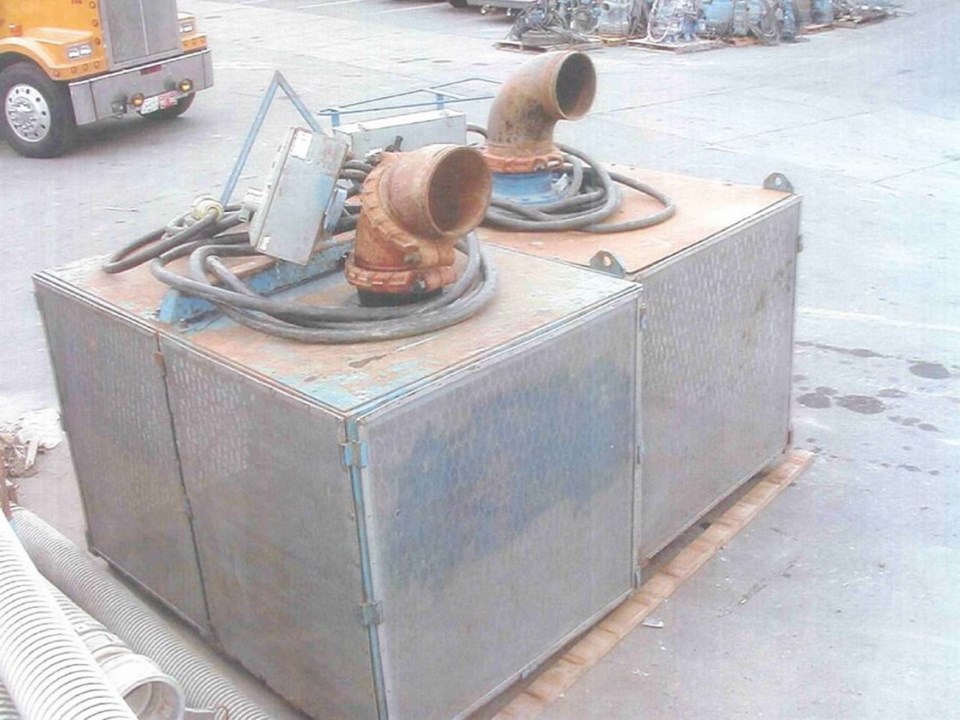Catalyst Paper is installing a $500,000 pump system in Lake Cowichan to maintain minimum water levels required in the Cowichan River.
It’s the first time that the company has turned to pumps.
It comes as the lake, which feeds the river, faces what has been deemed the worst year for early drought conditions, due to low snowpack in the winter and a dry spring.
The 20 pumps being installed are a precaution.
It is not certain if they will even be used — that is up to Mother Nature and whether rain falls in coming weeks.
Without rainstorms, the pumps could start running in mid-September, pulling water from the lake into the river.
The 94-horsepower pumps can be used for a maximum of 49 days, under government permit rules, said Brian Houle, Catalyst’s environmental manager at Crofton.
If fully used, Lake Cowichan’s level could drop by 58 centimetres over that length of time, he said.
However, Houle does not expect the level to go that low, saying it is more likely the level would be down by about 30 centimetres.
This is yet another year of concern for the Cowichan River, famous for its trout fishery and home to steelhead and salmon.
Despite years of discussion among stakeholders, no long-term solution has been reached for maintaining proper levels. Some support the idea of raising the weir at Lake Cowichan to allow for more water storage. That project has been estimated at about $10 million, but no funding has materialized. The weir is a structure running across the lake to regulate flows into the river.
In 2004, then-federal Environment Minister David Anderson supported the idea of raising the weir.
Lake Cowichan Mayor Ross Forrest is concerned about the impact of lowering the lake. He wonders about the environmental impact and how it would affect waterfront property owners.
If the lake drops to an unprecedented level, “That’s really scary,” he said Thursday.
He, too, favours raising the weir.
Catalyst’s mill at Crofton and its 600 jobs depend on the river’s water. The community of Crofton also uses the river for drinking water. First Nations have a historic stake in the river and recreational visitors flock to the river every summer.
Infrastructure is being installed at the lake now. First crews are tapping into B.C. Hydro high-voltage lines to power the pump system, Houle said.
Pumps have been rented and are arriving from across Canada. They will be installed side-by-side on the lake side of the weir and have a screen to protect fish. Each pump is about 91 centimetres by 122 centimetres.
Catalyst is initially spending close to $500,000 to install the system and costs could rise by $160,000 if the pumps are used, he said.
“This is not a permanent solution. This is not a good solution. But it is a temporary solution,” said Houle.
Currently, the flow rate is 4.5 cubic metres per second, which represents the release rate from the lake. When Catalyst takes what it needs, that leaves at least 2.3 cubic metres per second, as required under its water licence, he said. Provincial and federal governments have authority over the river.
This summer, Catalyst was granted emergency permission to reduce the river flow to 4.5 cubic metres per second. This is the lowest possible flow permitted to allow for fisheries survival and sewage dilution.
An environmental consultant is monitoring the lake, Houle said. Along with the fish, it is home to the Vancouver Island lamprey, found only in this lake and Mesachie Lake.



